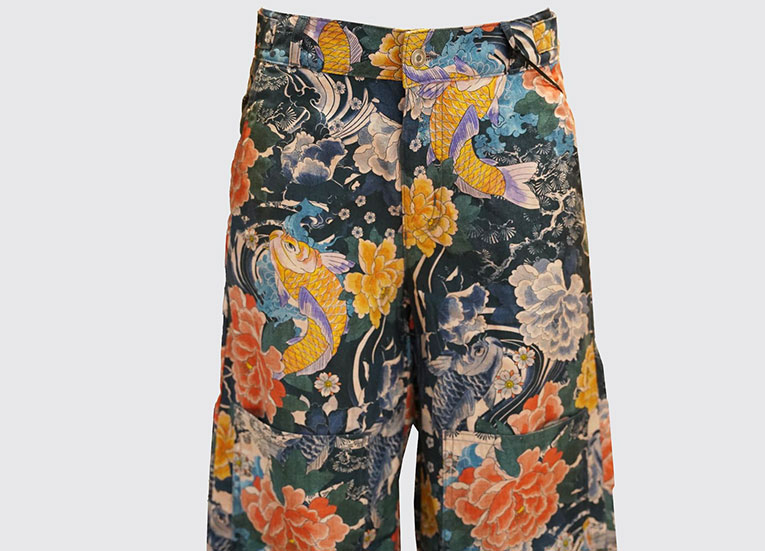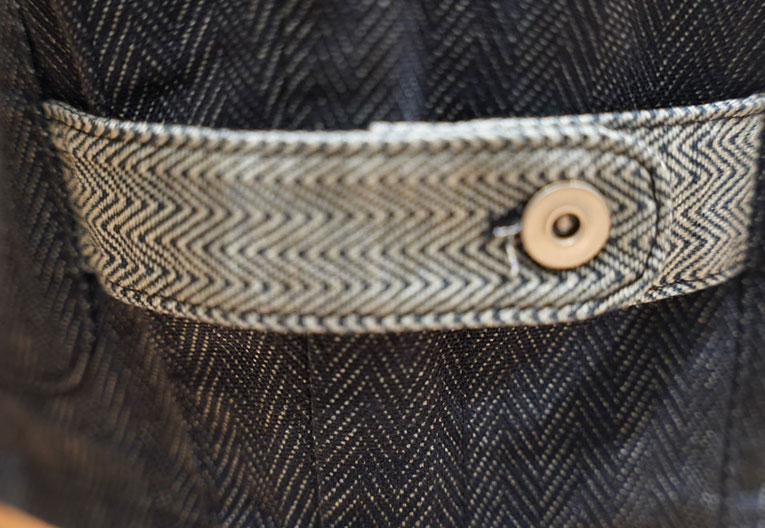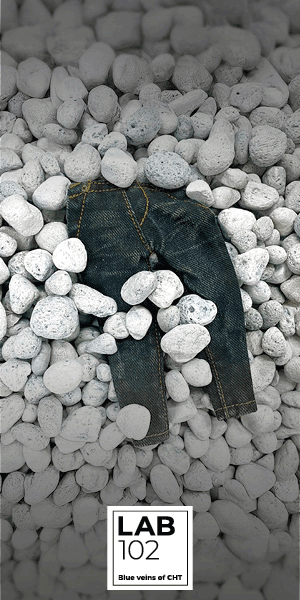Adriano Goldschmied on the potential of digital printing

The ‘Godfather of Denim’ tells Inside Denim how he sees advances in technology adding another dimension in terms of design and flexibility
Describing it as the mere “tip of the iceberg”, Adriano Goldschmied has told Inside Denim how he believes advances in digital print technologies are opening up a new realm of design possibilities and flexibility for the denim sector. From being a niche consideration a few years ago, new developments in machinery, software and inks mean the quality of print makes it a compelling option for companies wishing to expand their designs or those looking to access the market quickly, with no or very low minimum order quantities. “Digital print technology has made amazing progress, the finish and quality of the print is incredible,” he says. “I could show you a printed fabric close-up and you wouldn’t be able to recognise if it was printed or authentic.”
The prospect of creating digitally printed collections has been in discussion for several years with his partners at Pakistan-headquartered mill and manufacturer Artistic Milliners, and through their Artmill subsidiary, recent investments mean the group now has the capabilities offer these fabrics at scale. Mr Goldschmied had a “blank canvas” for his latest collection through his Daily Blue brand, with the aim of showing what the technology is capable of.
Japanese heart
Keen to keep the collection anchored in denim, Mr Goldschmied chose to explore Japanese indigo culture, using brands such as Japan’s Kapital – famous for its embroidered and patchworked garments – as a reference, but revealing how these looks can be made available to a wider demographic. Sourcing vintage items and rugs from Japan, the idea was to showcase how scanned and printed fabrics can be transformed. “Japanese indigo is a beautiful story but it is also extremely expensive; if you want to buy hand-made fabrics or printed kimonos, we are talking thousands of dollars. My idea was to make that aesthetic available to a much wider customer.”
As well as sourcing Japanese and vintage articles, Mr Goldschmied travelled to Italy’s Lake Como to work with artists creating custom designs (below). These were printed onto fabrics by Artmill and made into garments for the collection, which debuted at the recent Kingpins show in Amsterdam. “All the print is indigo inspired, it belongs to denim: I wanted to show an evolution, not a revolution,” he explains.

Speed-to-market
One of the reasons the fashion and denim industries has been suffering lately – besides economic worries, tariffs and upheaval – is that there has been a lack of innovation and real newness, he suggests. At the same time, digital print technology has made “amazing progress”. Exploring the concept further, digital printing uses fewer chemicals, very little water and less energy than traditional denims; its speed and flexibility making it well-suited to today’s rapidly moving markets. “Reacting quickly to the market is vital,” he says. “In a matter of days or weeks, I can develop a project, compared with the traditional months.”
Another positive aspect is that the denim world could become more colourful, and this is turn will open new product categories, such as shirting and dresses. “It can elevate today’s rather monotonous denim presentations to new levels of interest and emotional engagement for consumers,” he says. “We must keep customers intrigued and create new business opportunities.”
Because there is no weaving or dyeing set up, the minimum order qualities are also very low – making the technology accessible to young designers and smaller companies, who might not be able to commit to large orders, or customers who want to make limited-edition collections, test whether a design will sell, or even change the look of surplus fabrics. “From an aesthetic point of view, you have incredible possibilities,” he adds. “We can do things we couldn’t even imagine in the past.”
While some assume printing could be costly, this could be negated by using less expensive fabrics, a company spokesperson told us at Kingpins. 'Raw denim' looks will never fade with reactive dyes, and custom prints can be designed for each customer, if required. And as advances in machinery are enabling more “photorealistic” looks, advances in the inks mean brighter colours, and a new pigment dye machine will soon enable colours that fade like indigo.

Wide-ranging interest
The collection attracted a lot of interest from buyers at Kingpins, with Artmill telling Inside Denim that Digital Blue Wave had been the most popular capsule. “In Amsterdam, I was expecting to see interest from the more fashion-forward companies but there was also a lot of interest from the big players,” agrees Mr Goldschmied. “The fact that the big companies are showing a lot of interest is positive and means they are willing to try something new.”
While printed denims will never be able to replicate traditions denims exactly in look, feel and fade, they do not need to, he adds. The idea is to not replace denim, but instead to add a fresh sub-sector, to introduce newness and to achieve looks that have not been possible before. “This concept is not about substituting traditional denim, but about adding something to the denim world that we never had before,” he concludes. “Printing was probably one of the top conversations at Kingpins, and I’m sure we’re going to have a lot more conversations about it in the future.”
Image, top: Artistic Milliners' CEO Murtaza Ahmed and MD Omer Ahmed with Adriano Goldschmied
Credits: Artistic Milliners










